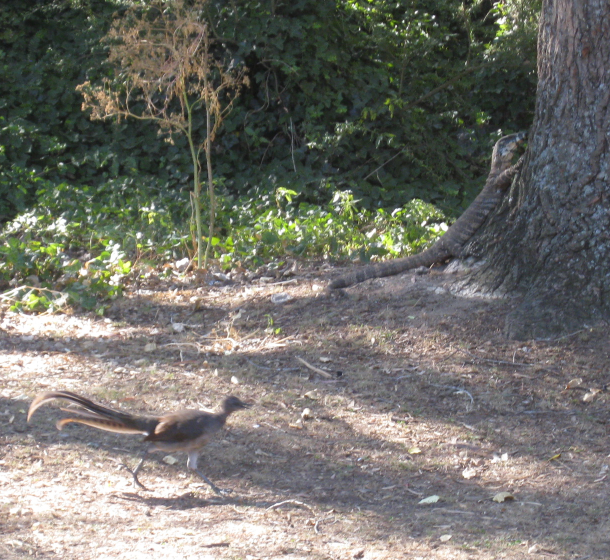Step 1: Get a good look
The equivalent of the star-gazer's telescope are the bird-watcher's binoculars and spotting scope. I don't own a spotting scope, but I did recently invest in a good pair of Nikon Monarch 5 binoculars. Boy what a game-changer. In one day I nearly doubled the number of birds I was able to ID in Centennial Park.
I did a lot of research before making my purchase, and I ended up spending around $300 on this 10x 42 mm pair. My priorities were a reasonably large field of view to aid in tracking, a bright image with the ability to distinguish colors even in shady conditions (i.e. multi-layer coating of lenses and prisms), good ergonomic feel, adjustable eye cups to use with sunglasses on or off, and something waterproof and fog free that would hold up in the field. Seems like a lot of requirements, but this pair fit the bill, and I have been very happy with my choice.
I love me my Nikon Monarch 5's
In the end I'm glad I went with the 10x and not the 8x, as it gives me just enough magnification to ID soaring birds and birds on offshore islands, although tracking of some forest species is almost impossible. My biggest surprise when shopping around was how big of a difference phase correction coatings can make on binoculars with roof prisms (nerd alert!).
Matt looks for sea birds on Wilson's Promontory, in Victoria.
Step 2: Figure out what you're looking at
The equivalent of a star-gazer's atlas is a trusty field guide. I use the Princeton Field Guide Birds of Australia, by Simpson and Day, which was a gift to Matt from his Grandma and Grandpa two Christmases ago. I'm happy to report it's gotten a lot of use and is slowly becoming a tattered, dirt-smudged symbol of my adventures. Good choice Grandma and Grandpa.
In addition to full-color illustrations for pretty much every species you might encounter in Australia, it has detailed distribution maps for every species and race, useful black-and-white drawings, and detailed descriptions of appearance, size, voice, behaviour, and habitat for each of the 780 birds listed. It includes tips on observing; primers on bird anatomy, life history, and plumage variation; lessons on habitat types and breeding cycles; safety tips; lists of Australian bird-watching organizations and published checklists; and 3 different types of indices for locating information quickly. Whew. And all in 381 pages.
The species themselves are organized by bird family, starting with large fowl, then moving on to sea and water birds, followed by predatory and forest birds. There is even a detailed list of "true vagrants," or rare sightings of species/races not usually found in Australia. Finally, it's both lightweight and leather bound, making it ideal for practical use in the field. I highly recommend it.
Over time I have come to know my field guide quite well (so that I can immediately flip to page 182 whenever I think I've finally spotted that endangered Eastern Bristlebird in Croajingolong National Park). The quick index on the last page of the book is a real time-saver.
Step 3: Document your findings
Lots of star-gazers take high-quality photos to share their experiences with others. And lots of birdwatchers take high quality photos with their expensive outfitted cameras. My sad little point-and-shoot camera is not the best way to document what I see... and strapping an iPhone to your binoculars is surprisingly tricky, and does not usually result in a quality shot:
Bad iPhone photo of some crested terns shot through my left binocular lens
My next investment will be a nice camera, but for now I've rather enjoyed documenting my bird-watching through list-keeping, blogging, and audio recording. I use my Sony handheld audio recorder to make observations and notes in the field, as well as to record bird vocalizations.
An iPhone also works great for recording bird sounds, but I don't like using it in the field for several reasons:
- It can easily be dropped into the water or down a cliff
- It can get dirty
- It can ring unexpectedly, disturbing the silence
- It requires your phone not to be dead (which is hard to achieve on long road trips and in isolated areas where your phone is constantly working to find a signal)
- It requires audio files to be transferred by email (unless you can use AirDrop)
I am still exploring ways of sharing some of this audio on my blog. (Stay tuned!)
To sum up: I'm still no pro, but I have come to realize that investing in a little bit of equipment can go a long way towards enhancing your bird-gazing experience.














